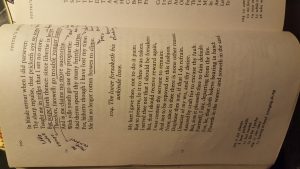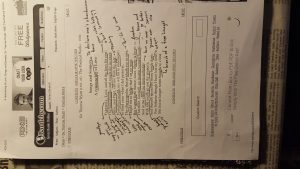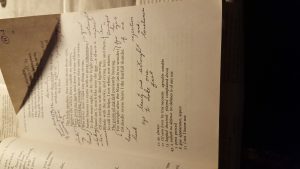






Commentary
After I finished reading sonnet ninety-sever A description of such a one as he would love by Sir Thomas Wyatt, I interpreted it as the speaker telling and describing to us the readers what his perfect “love” will be like. Sir Thomas Wyatt paints a perfectly sketched out image in the reader’s mind of what she would look like. In addition, Wyatt also gives her personal attributes that makes her stand out from others. For example, he says “With gladsome cheer all grief to expel”. The woman that he is talking must be perfect because she seems to have no flaws at all.
When I finished reading and analyzing sonnet one hundred and three A renouncing of love by Sir Thomas Wyatt, my first thought was the speaker went through a terrible relationship with the one he once love. Hence, why the title is called A renouncing of love. Although when I kept rereading it, I began to realize this poem is not about a “love” a man has for a person but for a particular place. It reminded me of Isabella Whitney’s poem Will and Testament because of it’s structure. In addition, I liked how the sonnet used the imagery and symbols of “bayted hookes” “brittle dartes” to paint the scene. The sonnet has layers of pain and hurt. In other words, the sonnet reads as one escaping all the hardships of a place he or she once loved. It’s a clever poem and takes several reads to truly understand it’s message.
While I was reading sonnet forty-five The lover describeth his being striken with the sight of his love by Sir Thomas Wyatt it sort of reminded me of that cliche saying “love at first sight”. Through this poem the readers are invited to experience the feelings the speaker was experiencing in a first person point of view. To put it another way, the speaker makes use of the letter “I” repeatedly to make the reader feel as if he or she was the one experiencing the emotions and feelings. One element I really enjoyed about this sonnet was it was not too romanticized of love but it showed the type of impact the love had which turned out to be deadly and hurtful. For example when you examine and analyze the last four quatrains “So call I for helpe, I not when, nor where,/The paine of my fall paciently bearing/For streight after the blase (as is no wonder)/ Of deadly noyse heare the fearfull thunder. These particular four stanzas shows how something once beautiful can turn so deadly an hurtful in a matter of couple lines. The poem has a dark and gloominess tone which is why I like it so much.
.


Nice making connections to the text. I was unclear on how to present the remixes but I have a better idea now.